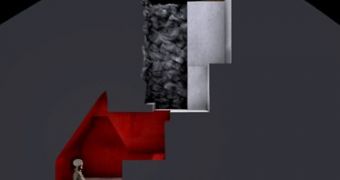An entombed human skeleton believed to be of an elite member of the ancient Maya Empire found in Honduras could explain more about the "Apocalypto" civilization.
The upright located body, surrounded by shells, pottery, vessels and jade adornments was dated around 650 A.D. and comes with many surprises about the complex culture and political system in Cop?n, one of the most important Mayan cities, which flourished between the fifth and ninth centuries A.D.
"The position of the body, the structure of the tomb, and several unexpected artifacts suggest the interred individual was a political or priestly figure," said discoverer Allan Maca, an archaeologist at Colgate University in New York State and director of the Project for the Planning of Ancient Cop?n, who encountered the tomb in 2005 during excavations on the Cop?n Archaeological park.
The 50-years old man presented "a jade pectoral hung from a necklace of dozens of jade beads of various sizes. Because jade was a precious commodity, the jewels represent a level of control over economic resources", Maca said.
Bioarchaelogical analyses revealed that the individual suffered of various conditions: he had poor use of his left arm, poor arterial flow through his upper spinal cord, and mastoiditis, a chronic infection in the back of the skull.
"The tomb is characterized by a split vault created by interlocking lintels [load-bearing horizontal supports]. The chamber was accessed from above by a stuccoed stone chute that descends from the surface of the temple," said Maca, a structure which made the tomb be "reentered years after the original interment, for purposes of ancestor veneration".
"The tomb's location, some 1,300 feet (400 meters) west of the Acropolis, Cop?n's ceremonial core, was unexpected. The design is without precedent in the Maya area and is the first elaborate tomb construction to be discovered outside the ceremonial center of Cop?n. The grandiose tombs belonging to members of the Cop?n dynasty, royal court, and royal family are typically found in Cop?n's Acropolis," explainded Maca.
The way the individual was buried, seated with the legs crossed, was not typical for the Maya Classic period (III-IX centuries) and some vessels displayed false or alternative hieroglyphics, which were different from the Maya inscriptions.
"Some of the pottery vessels likely came from the south near present-day El Salvador. Also found in the tomb were seashells laid in a pattern that appears to represent a kind of cosmological map and may be representative of the waters in Maya creation mythology. The shells must have arrived to the region through commercial exchanges with the coast," Maca said. It seems that the Classic-period Cop?n society was not Mayan monocultural.
"This goes against theories that all populations in the Cop?n Valley were uniquely Mayan. There appears to have been a cultural mix", said Dario Euraque, director of the Honduran Institute of Anthropology and History.

 14 DAY TRIAL //
14 DAY TRIAL //